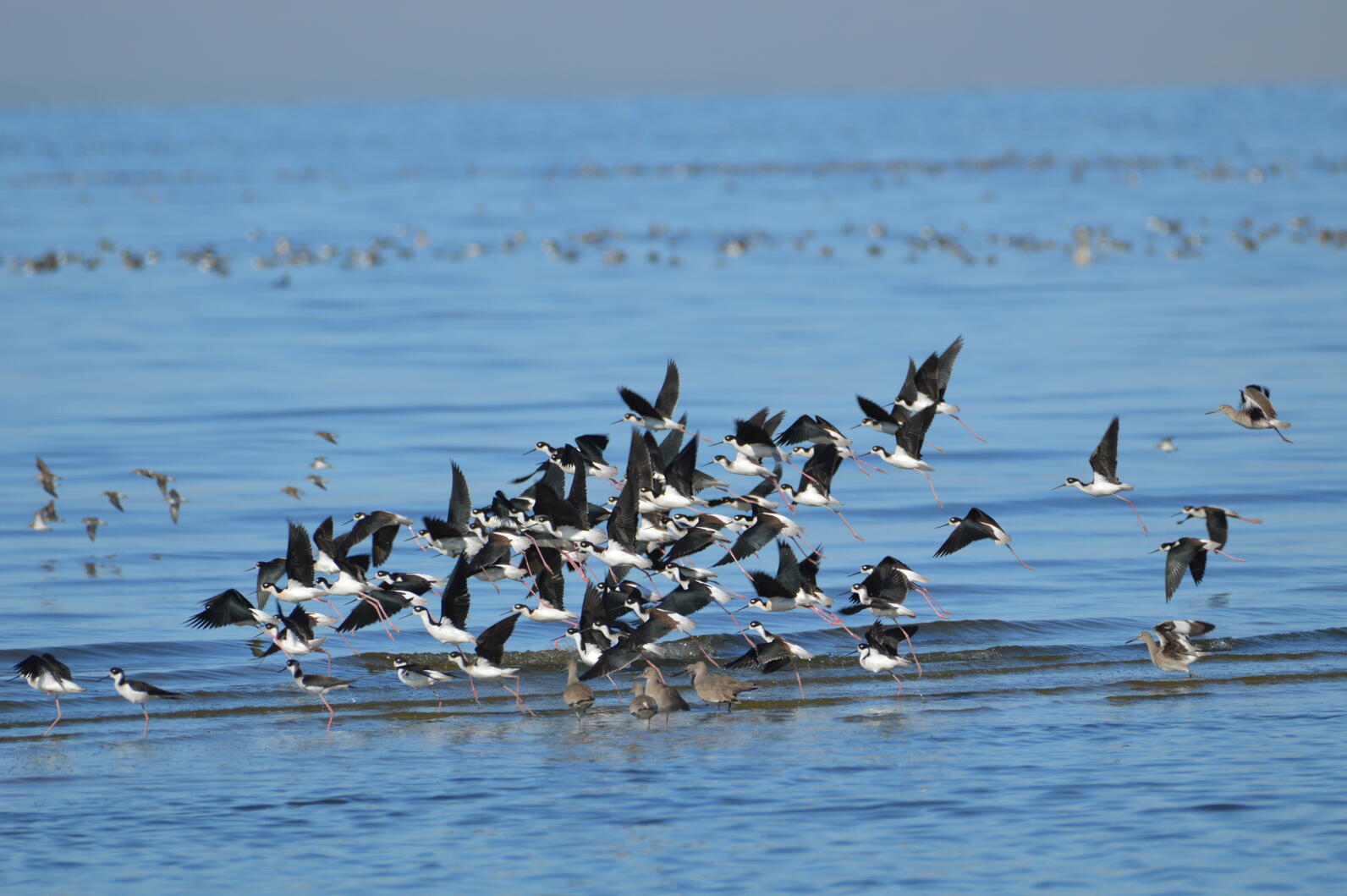
This article originally appeared in The Desert Sun.
I love hiking the trails of the Coachella Valley and along the shorelines of the Salton Sea with my German shepherd, Logan. He loves loping ahead of me on the trail, leaving deep tracks along the muddy waterline. He doesn’t notice that the trek to the waterline is a little longer each month, and, in spite of his keen sense of smell, doesn’t mind the less-than-pleasant odors that sometimes waft in from the lake. For him, every outing is a joy.
That’s why I was particularly sad to hear that a dog recently died due to exposure to a bloom of cyanobacteria at the Salton Sea. While this imposing body of water may look enticing from far away, luring visitors like me, long sunny days, inflows of rich agricultural nutrients and still waters at the sea make it a perfect recipe for blue-green-algae blooms and the neurotoxins they give off.
In addition to the high levels of salinity that are killing what few fish remain in California’s largest lake, the microcystin toxins that accompany algae blooms can prove fatal if ingested for both people and animals, including the thousands of migratory and resident birds that rely on the sea as critical habitat. Aerosolized, those toxins are a harsh respiratory irritant that blow towards nearby communities.
Despite its persisting beauty, the sea continues to recede, due to water transfers and ever-increasing summer temperatures already regularly hitting triple digits. That may very well make these algal blooms more frequent. Public respiratory health in this region is already stressed with high levels of windblown dust from the exposed lakebed; microcystins add another potent irritant that residents of nearby communities have to worry about.
The urgent need for the implementation of the Salton Sea Management Plan and the development of a long-term vision for the Sea’s future is becoming much more evident -- residents need a well-managed body of water and birds need cleaner habitats. With poor air quality, algae neurotoxins, and a contaminated ecosystem, the region is in need of a double dose of attention and deep integration of the agencies, landowners and organizations seeking a solution.
Ecologically speaking, we are on the brink of a major collapse. According to the United States Bureau of Reclamation, salinity levels at the Sea have increased 66 percent from 2004 to 2020. This gigantic increase in salinity is a result of the 2003 Quantification Settlement Agreement (QSA), transferring Colorado River water allocations from Imperial Valley agriculture to San Diego.
In the meantime, the Colorado River Basin Regional Water Control Board that monitors the water quality of the Sea is urging visitors to be cautious -- and, together with other agencies, for everyone else to be patient. While help is on the way – maybe, at some point – warnings like algal blooms tell us there’s no time left for patience.
In my frequent surveys at the Sea, I still encounter many people visiting this majestic body of water that, despite all its challenges, still shows flashes of beauty. Many of those visitors stop to share their stories and memories of fishing, swimming, or boating, as well as water skiing or wakeboarding at the Salton Sea. Whether a return to those days – eliminating hazardous dust and algae blooms in the process -- is even partially possible remains an open question without meaningful and rapid progress at the Sea.





